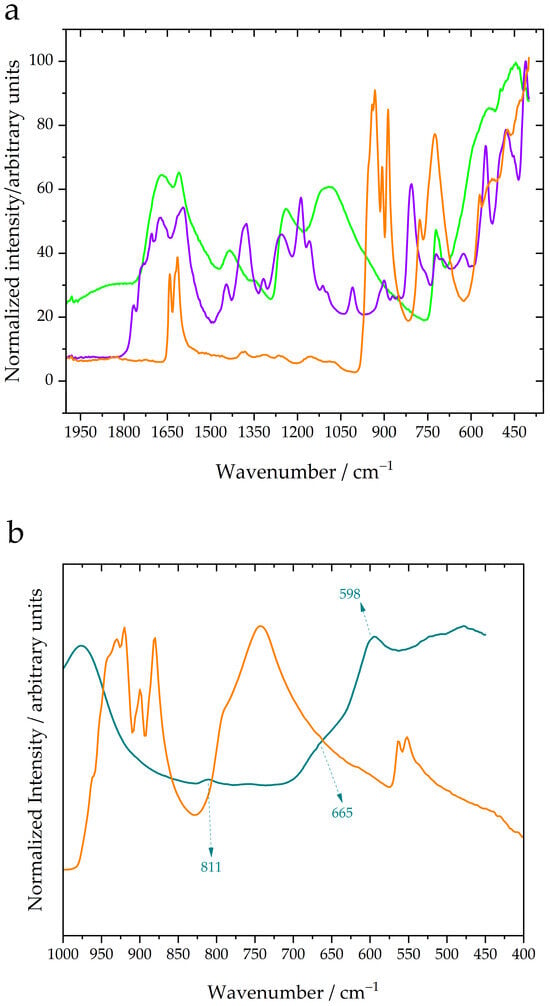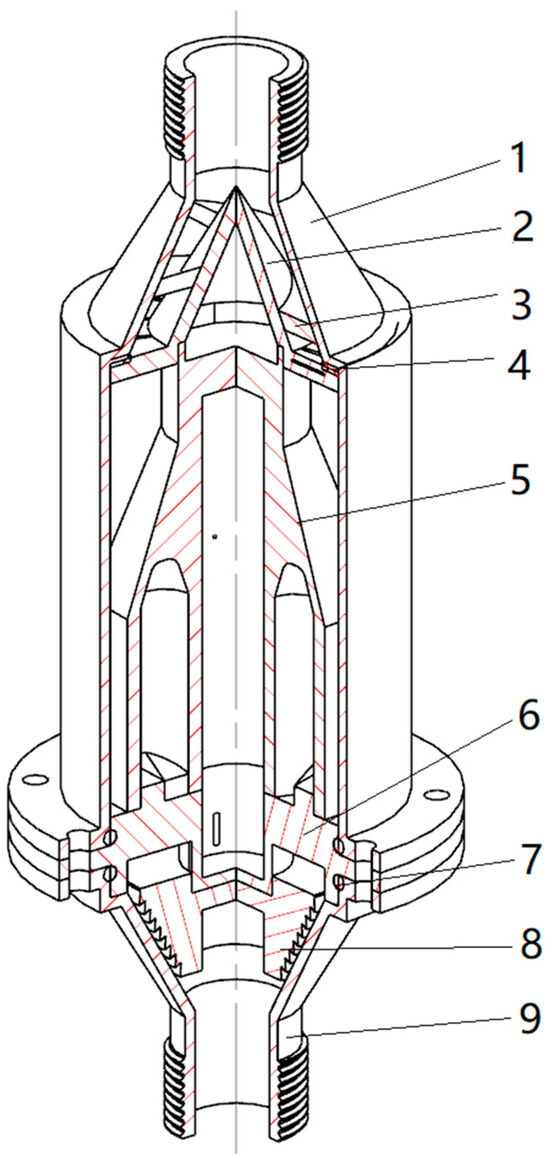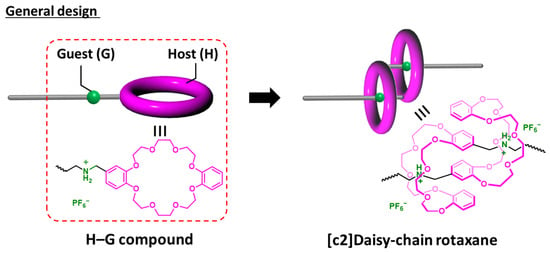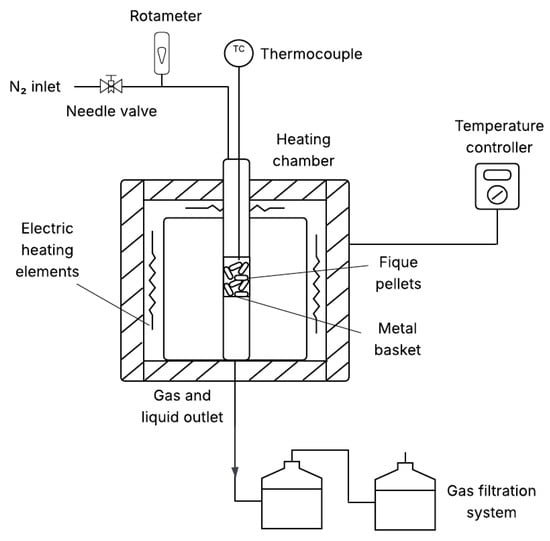Journal Description
Reactions
Reactions
is an international, peer-reviewed, open access journal on reaction chemistry and engineering published quarterly online by MDPI.
- Open Access— free for readers, with article processing charges (APC) paid by authors or their institutions.
- High Visibility: indexed within ESCI (Web of Science), Scopus, EBSCO, and other databases.
- Rapid Publication: manuscripts are peer-reviewed and a first decision is provided to authors approximately 21.5 days after submission; acceptance to publication is undertaken in 4.6 days (median values for papers published in this journal in the first half of 2025).
- Recognition of Reviewers: APC discount vouchers, optional signed peer review, and reviewer names published annually in the journal.
- Journal Cluster of Chemical Reactions and Catalysis: Catalysts, Chemistry, Electrochem, Inorganics, Molecules, Organics, Oxygen, Photochem, Reactions, Sustainable Chemistry.
Impact Factor:
2.2 (2024);
5-Year Impact Factor:
2.2 (2024)
Latest Articles
C–H Annulation in Azines to Obtain 6,5-Fused-Bicyclic Heteroaromatic Cores for Drug Discovery
Reactions 2025, 6(4), 72; https://doi.org/10.3390/reactions6040072 - 10 Dec 2025
Abstract
Fused-bicyclic heteroaromatic cores are a common framework in drugs and other biologically active compounds. Those containing azine rings are widely used in drug discovery campaigns. Although these cores are very common, C–H functionalization of their azine moieties remains challenging, especially in annulation reactions.
[...] Read more.
Fused-bicyclic heteroaromatic cores are a common framework in drugs and other biologically active compounds. Those containing azine rings are widely used in drug discovery campaigns. Although these cores are very common, C–H functionalization of their azine moieties remains challenging, especially in annulation reactions. Therefore, this review highlights the progress made over the years in C–H annulation reactions that have produced these essential 6,5-fused bicyclic heteroaromatic cores for drug discovery. For that, the review was divided according to the five-membered rings moiety (pyrrole, pyrazole, imidazole, furan, thiophen, and thiazole) fused to different azines (pyridine, pyrazine, pyridazine, pyrimidine, and triazine). Although some important advances have been made over the years, there remains a need for research in synthetic methodology to expand the use of these heteroaromatic cores in biologically active compounds.
Full article
(This article belongs to the Special Issue Advances in Organic Synthesis for Drug Discovery and Development)
►
Show Figures
Open AccessArticle
Trivalent Chromium Electroplating Baths—The Inner-Sphere Complex Hypothesis
by
Julio C. Avalos, Axel S. Martínez, Eugenia Aldeco-Pérez, Julieta Torres-González and German Orozco
Reactions 2025, 6(4), 71; https://doi.org/10.3390/reactions6040071 - 8 Dec 2025
Abstract
There are 880 studies focused on trivalent chrome baths, and several studies suggest the formation of
There are 880 studies focused on trivalent chrome baths, and several studies suggest the formation of
(This article belongs to the Special Issue Feature Papers in Reactions in 2025)
►▼
Show Figures

Figure 1
Open AccessArticle
Computational Investigation of Mechanism and Selectivity in (3+2) Cycloaddition Reactions Involving Azaoxyallyl Cations
by
Wei Zhou, Lei Zhang, Guixian Liu, Xiaosi Ma and Xiangtai Meng
Reactions 2025, 6(4), 70; https://doi.org/10.3390/reactions6040070 - 8 Dec 2025
Abstract
Azaoxyallyl cations, as novel and versatile three-atom components, have been widely utilized in cycloaddition reactions, with the competition between O- and N-cyclization pathways remaining a key research focus. This study investigates the mechanism and site selectivity of (3+2) cycloaddition between azaoxyallyl cations and
[...] Read more.
Azaoxyallyl cations, as novel and versatile three-atom components, have been widely utilized in cycloaddition reactions, with the competition between O- and N-cyclization pathways remaining a key research focus. This study investigates the mechanism and site selectivity of (3+2) cycloaddition between azaoxyallyl cations and 1,2-benzisoxazoles using density functional theory calculations. The results reveal a stepwise (3+2) addition to the C=N double bond, followed by base-assisted N-O bond cleavage and isoxazole ring-opening, leading to oxazoline (via O-cyclization) or imidazolone (via N-cyclization) derivatives. When unsubstituted 1,2-benzisoxazole is used as the substrate, O-cyclization dominates as a kinetically controlled process due to lower activation barriers, while N-cyclization, as a thermodynamically controlled process, is minor. The presence of a methyl group at the C(3) position in 1,2-benzisoxazoles completely blocks N-O bond cleavage, forcing exclusive (3+2) cycloaddition to yield less stable tricyclic products via N-cyclization rather than O-cyclization. These findings align with experimental observations and provide new mechanistic insights into the site selectivity of azaoxyallyl cation cycloadditions.
Full article
(This article belongs to the Special Issue Cycloaddition Reactions at the Beginning of the Third Millennium, 2nd Edition)
►▼
Show Figures

Figure 1
Open AccessArticle
Optimization and Kinetic Study of Palmitic Acid Esterification with Subcritical Methanol via Response Surface Methodology
by
Jie Luo, Zhigang Que, Ke Zhang, Yinxuan Fu, Xiaodi Cheng, Rong Huang, Jinming Shi, Haiwei Jiang, Xianbin Ai, Tonghui Deng, Xianhua Qiu and Chunbao Xu
Reactions 2025, 6(4), 69; https://doi.org/10.3390/reactions6040069 - 5 Dec 2025
Abstract
►▼
Show Figures
Biodiesel is a green, low-carbon, and renewable fuel with the potential to substitute fossil fuels. The effects of reaction temperature (175–290 °C), residence time (5–75 min), and molar ratio of methanol to palmitic acid (6:1–35:1) on the non-catalytic esterification of palmitic acid with
[...] Read more.
Biodiesel is a green, low-carbon, and renewable fuel with the potential to substitute fossil fuels. The effects of reaction temperature (175–290 °C), residence time (5–75 min), and molar ratio of methanol to palmitic acid (6:1–35:1) on the non-catalytic esterification of palmitic acid with methanol to produce biodiesel were investigated by using a batch reactor. Moreover, the reaction parameters were optimized by using the response surface methodology (RSM), and the reaction kinetics were analyzed. The results showed that the conversion rate of palmitic acid to methyl palmitate increased to 100% as the reaction temperature rose from 175 °C to 225 °C, slightly changed until 275 °C, and then decreased to 94.81% at 290 °C. The conversion rate increased with residence time and reached the maximum value of 94.93% at 60 min. With increasing the molar ratio, the conversion rate rose to a maximum value of 85.46% at 15:1 and subsequently decreased. RSM results indicated the relative influence of factors on the conversion rate as reaction temperature > residence time > molar ratio. The optimal reaction parameters were 224 °C, 26 min, and a molar ratio of 16:1, affording a palmitic acid conversion rate of 99.30%. The esterification reaction between methanol and palmitic acid follows the first-order kinetics model.
Full article

Figure 1
Open AccessArticle
Degradation and Nitrogen Transfer of 4-Aminophenol by Cavitation Induced by a Composite Hydrodynamic Cavitator
by
Baoe Wang, Rihong Zhang, Zipeng She and Yiyong Li
Reactions 2025, 6(4), 68; https://doi.org/10.3390/reactions6040068 - 4 Dec 2025
Abstract
►▼
Show Figures
The treatment of refractory nitrogenous organic matter in industrial wastewater management poses challenges in the removal of organic matter and nitrogen. To address these issues, this study utilized a novel composite hydrodynamic cavitator, mainly consisting of spiral pipes and a step drain, which
[...] Read more.
The treatment of refractory nitrogenous organic matter in industrial wastewater management poses challenges in the removal of organic matter and nitrogen. To address these issues, this study utilized a novel composite hydrodynamic cavitator, mainly consisting of spiral pipes and a step drain, which could generate cavitation twice per pass at the throat of the spiral pipe and the step drain of the cavitation cavity, thereby distinguishing it from other existing cavitators that produce cavitation only once per pass. The composite hydrodynamic cavitator, optimized using ANSYS 19.2 simulation software, offers significant advantages in energy utilization and mass transfer efficiency. Moreover, it generates a high concentration of hydroxyl free radicals, which are crucial for organic matter degradation. Batch experiments demonstrated the effective treatment of 4-aminophenol. Within 120 min, 4-aminophenol degradation efficiency reached 74.7% and total nitrogen concentration decreased slightly from 1.28 mg/L to 1.06 mg/L, while ammonia nitrogen concentration initially increased before decreasing from its peak value of 0.82 mg/L to 0.77 mg/L. During the cavitation treatment of 4-aminophenol, intermediate products, such as benzoquinone, were generated. Under the strong oxidizing action of hydroxyl radicals, nitrogen undergoes deamination to form ammonium ions, which were likely removed predominantly as nitrogen gas. The experimental results are anticipated to establish a foundation for the application of hydrodynamic cavitation technology in the treatment of refractory organic wastewater degradation and to support denitrification processes.
Full article

Figure 1
Open AccessReview
Furo[3,2-b]pyrrole-5-carboxylate as a Rich Source of Fused Heterocycles: Study of Synthesis, Reactions, Biological Activity and Applications
by
Renata Gašparová
Reactions 2025, 6(4), 67; https://doi.org/10.3390/reactions6040067 - 2 Dec 2025
Abstract
►▼
Show Figures
Furo[3,2-b]pyrroles (FPs) are important members of the heteropentalene family. In particular, furo[3,2-b]pyrrole-5-carboxylates (FPcs) are commonly used as versatile building blocks for the synthesis of a large library of FP derivatives. Their structure with five potential reaction centres and an
[...] Read more.
Furo[3,2-b]pyrroles (FPs) are important members of the heteropentalene family. In particular, furo[3,2-b]pyrrole-5-carboxylates (FPcs) are commonly used as versatile building blocks for the synthesis of a large library of FP derivatives. Their structure with five potential reaction centres and an electron-rich character enables a wide range of transformations, from simple substitutions to multi-step reactions, yielding complex compounds with a furo[3,2-b]pyrrole scaffold. Many furo[3,2-b]pyrrole derivatives exhibit promising biological activity, while others have been employed in the construction of π-conjugated fused systems for optoelectronics. Efficient synthetic routes to furo[3,2-b]pyrrole derivatives are therefore of considerable interest. This review focuses on the synthetic methods leading to furo[3,2-b]pyrrole-5-carboxylates (FPcs), from the first successful attempts in the 1970s to recent approaches. Various methodologies are reported for the construction of complex molecules built from furo[3,2-b]pyrrole-5-carboxylates, emphasising their utility in the synthesis of fused heterocycles. This review also covers recent advances in screening for biological activity and applications such as fluorescent dyes.
Full article

Graphical abstract
Open AccessReview
Green Strategies for the Synthesis of Heterocyclic Derivatives with Potential Against Neglected Tropical Diseases
by
Vinícius Augusto Campos Péret and Renata Barbosa de Oliveira
Reactions 2025, 6(4), 66; https://doi.org/10.3390/reactions6040066 - 2 Dec 2025
Abstract
Neglected tropical diseases (NTDs) remain a significant global health burden, exacerbated by the ongoing climate emergency, which alters disease distribution and increases vulnerability in affected populations. The urgent need for novel therapeutics demands innovative approaches in drug discovery, with heterocyclic compounds serving as
[...] Read more.
Neglected tropical diseases (NTDs) remain a significant global health burden, exacerbated by the ongoing climate emergency, which alters disease distribution and increases vulnerability in affected populations. The urgent need for novel therapeutics demands innovative approaches in drug discovery, with heterocyclic compounds serving as versatile scaffolds due to their diverse electronic and structural properties that enable potent biological activity. This review highlights how green chemistry principles have been applied to the construction of bioactive heterocyclic cores relevant to NTD drug development. Key sustainable methodologies are discussed, including microwave-assisted solvent-free and green-solvent reactions, ultrasound-assisted synthesis, mechanochemical one-pot multistep strategies, and the use of ionic liquids and deep eutectic solvents as environmentally benign catalysts and reaction media. By focusing on these approaches, the review emphasizes how green synthetic strategies can accelerate the development of pharmacologically relevant heterocycles while minimizing environmental impact, resource consumption, and hazardous waste generation.
Full article
(This article belongs to the Special Issue Advances in Organic Synthesis for Drug Discovery and Development)
►▼
Show Figures

Figure 1
Open AccessEditorial
Editorial for the Special Issue on Traditional and Innovative Catalysts for Reactions of Industrial Interest
by
Michela Signoretto and Federica Menegazzo
Reactions 2025, 6(4), 65; https://doi.org/10.3390/reactions6040065 - 1 Dec 2025
Abstract
Catalysis remains the indispensable bedrock of modern industrial chemistry [...]
Full article
(This article belongs to the Special Issue Traditional and Innovative Catalysts for Reactions of Industrial Interest)
Open AccessArticle
Photocatalytic and Photo-Fenton-like Degradation of Methylene Blue Using Green-Synthesized Phosphate-Doped ZnO Under Visible LED Light
by
Soukaina Nehhal, Majda Ben Ali, Younes Abrouki, Khalid Ofqir, Yassine Elkahoui, Najoua Labjar, Hamid Nasrellah and Souad El Hajjaji
Reactions 2025, 6(4), 64; https://doi.org/10.3390/reactions6040064 - 28 Nov 2025
Abstract
►▼
Show Figures
Water pollution caused by synthetic dyes is a major environmental concern due to their stability, toxicity, and resistance to conventional wastewater treatments. This study presents a sustainable approach for synthesizing zinc oxide (ZnO) nanoparticles using artichoke biomass (waste) as a green precursor and
[...] Read more.
Water pollution caused by synthetic dyes is a major environmental concern due to their stability, toxicity, and resistance to conventional wastewater treatments. This study presents a sustainable approach for synthesizing zinc oxide (ZnO) nanoparticles using artichoke biomass (waste) as a green precursor and enhancing their visible light photocatalytic activity through phosphorus doping. ZnO nanoparticles were successfully synthesized via a simple green route and doped with 3–6% phosphorus using NH4H2PO4. The structural, morphological, and optical properties of the resulting P-ZnO were characterized by XRD, SEM/EDX, TEM, FTIR, and UV-Vis spectroscopy. (6 wt%) Phosphorus doping effectively reduced the band gap from 3.06 eV to 2.95 eV, extended light absorption into the visible range, and improved electron–hole separation, resulting in enhanced photocatalytic performance. The P-ZnO nanoparticles were evaluated for methylene blue (MB) degradation under visible light in a photo-Fenton-like process, with H2O2 as an oxidant. The degradation efficiency reached 87.05% with 6% P-ZnO and further increased to 92.35% upon addition of H2O2. Durability and reusability tests demonstrated that the 6% P-ZnO catalyst maintained its activity and structural integrity over four consecutive cycles, indicating negligible loss of efficiency and excellent resistance to surface poisoning. The photocatalytic activity was strongly impacted by the quantity of catalyst, solution pH, and initial dye levels, with optimal performance at 0.3 g/L catalyst loading, pH 3, and lower MB concentrations.
Full article

Figure 1
Open AccessArticle
Structural and Catalytic Assessment of Clay-Spinel-TPA Nanocatalysts for Biodiesel Synthesis from Oleic Acid
by
Khalid Al-Qaysi, M. Rahimnejad and Ali Abdul Rahman-Al Ezzi
Reactions 2025, 6(4), 63; https://doi.org/10.3390/reactions6040063 - 26 Nov 2025
Abstract
►▼
Show Figures
A series of clay–spinel nanocomposites reinforced by tungstophosphoric acid (TPA) were prepared and examined for the esterification of oleic acid. The type of spinel (ZnAl2O4 and CuAl2O4) and the weight ratio of clay-to-spinel were evaluated. The
[...] Read more.
A series of clay–spinel nanocomposites reinforced by tungstophosphoric acid (TPA) were prepared and examined for the esterification of oleic acid. The type of spinel (ZnAl2O4 and CuAl2O4) and the weight ratio of clay-to-spinel were evaluated. The characterization results revealed that the clay–ZnAl2O4 nanocomposite formed better than the clay–CuAl2O4, with fewer other phases, such as ZnO or CuO. Moreover, clay–ZnAl2O4 showed higher pore volume and pore size, which led to higher conversion of oleic acid to biodiesel. The nanocomposite exhibited a good interaction between the spinel phase and clay, preventing the agglomeration of TPA. Assessing the weight ratio of clay-to-ZnAl2O4 (0.5, 1, and 1.5) showed that the same ratio of clay-to-spinel provided higher activity. It can be attributed to its rough surface, which facilitates vortex flow on the catalyst surface, its high pore volume (0.122 cc/g), and pore size (24.6 nm), enabling the diffusion of reactants and the egression of products, as well as its high acidic (453.9 μmol/g) and basic (731.6 μmol/g) properties. The clay–ZnAl2O4(1)–TPA with the largest particle size in the range of 10–30 nm converted 81.9% of oleic acid under the conditions of 120 °C, a 12 molar ratio of methanol-to-oleic acid, 4 wt.% of catalyst, and 4 h of reaction time. Due to both acidic and basic properties, along with its good reusability, the clay–ZnAl2O4(1)–TPA nanocatalyst can be a suitable catalyst for industrial biodiesel production via esterification and transesterification reactions.
Full article

Figure 1
Open AccessFeature PaperArticle
Novel Design of [c2]Daisy-Chain Rotaxane Crosslinkers Bearing Long-Chain Alkenes and Development of Tough Topological Polymer
by
Yuuki Kawashima, Moe Koda, Kenjiro Onimura and Kazuhiro Yamabuki
Reactions 2025, 6(4), 62; https://doi.org/10.3390/reactions6040062 - 15 Nov 2025
Abstract
►▼
Show Figures
To explore new possibilities in topological materials, we designed a tetrafunctional crosslinker composed of a [c2]daisy-chain rotaxane framework. In this study, a novel topological network polymer was successfully synthesized via an addition reaction between 3,6-dioxa-1,8-octanedithiol (DODT) and a tetrafunctional crosslinker, a [c2]daisy-chain rotaxane
[...] Read more.
To explore new possibilities in topological materials, we designed a tetrafunctional crosslinker composed of a [c2]daisy-chain rotaxane framework. In this study, a novel topological network polymer was successfully synthesized via an addition reaction between 3,6-dioxa-1,8-octanedithiol (DODT) and a tetrafunctional crosslinker, a [c2]daisy-chain rotaxane constructed from dibenzo-24-crown-8 ether (DB24C8) units and bearing long-chain alkenes on its four benzene rings. The resulting network polymer exhibited both high stiffness and toughness, along with excellent shape-memory properties. These characteristics were governed by a balance between plastic and elastic deformation originating from the DODT and rotaxane domains, respectively, highlighting a new design strategy for the creation of advanced topological materials.
Full article

Figure 1
Open AccessArticle
Adsorption Kinetics and Pollutant Capture in Aqueous Media Using Biochar from Pyrolyzed Fique Pellets
by
Adriana M. Quinchia-Figueroa, Nevis A. Ruiz Márquez, Mariana Bustamante-Durango, Mario A. Sánchez, Juan C. Maya, Roger Solano and Farid Chejne
Reactions 2025, 6(4), 61; https://doi.org/10.3390/reactions6040061 - 13 Nov 2025
Abstract
►▼
Show Figures
Biochar has emerged as a promising adsorbent for removing organic pollutants from aqueous media, with its efficiency strongly influenced by the feedstock and pyrolysis conditions. In this study, biochar produced from fique pellets under controlled pyrolysis was evaluated using methylene blue (MB) as
[...] Read more.
Biochar has emerged as a promising adsorbent for removing organic pollutants from aqueous media, with its efficiency strongly influenced by the feedstock and pyrolysis conditions. In this study, biochar produced from fique pellets under controlled pyrolysis was evaluated using methylene blue (MB) as a model contaminant. The cation exchange capacity reached up to 17 meq g−1 for biochar obtained at lower temperatures, while those produced at 700 °C showed values below the detection limit, consistent with the depletion of oxygenated functional groups observed in FTIR spectra. Batch adsorption experiments revealed removal efficiencies above 99% for biochar produced at 550 °C and 700 °C (45 min). The 700 °C biochar exhibited faster initial adsorption due to its larger surface area, whereas the 550 °C biochar achieved higher and more stable overall removal over prolonged contact times, attributed to the preservation of surface functional groups and measurable CEC. Kinetic modeling demonstrated that the adsorption process followed the Özer model, indicating heterogeneous surface interactions and diffusion-controlled steps. These results highlight the influence of pyrolysis temperature on adsorption kinetics and support the potential of biochar obtained from fique pellets as a sustainable, low-cost material for water purification and agro-industrial residue valorization.
Full article

Figure 1
Open AccessArticle
Evaluating Sodium Hydroxide and Hydrogen Peroxide as Chemical Treatment for Cellulose Extraction from Clitoria fairchildiana Pruning Residues
by
Mariana Barboza da Silva, Rosana Reis de Lima Araújo, Renata Maria Rosas Garcia Almeida, Carlos Eduardo de Farias Silva, Maria Regina Pereira Brandão, Thiago de Menezes Bernardino, Larissa Nascimento Lôbo, Jeniffer Mclaine Duarte de Freitas and Johnnatan Duarte de Freitas
Reactions 2025, 6(4), 60; https://doi.org/10.3390/reactions6040060 - 6 Nov 2025
Abstract
►▼
Show Figures
Lignocellulosic residues represent a promising source of raw material for obtaining several high-value bioproducts, including cellulose and derivatives. One of the main barriers to cellulose extraction from these residues is the presence of other components associated with the cellulose matrix, such as lignin
[...] Read more.
Lignocellulosic residues represent a promising source of raw material for obtaining several high-value bioproducts, including cellulose and derivatives. One of the main barriers to cellulose extraction from these residues is the presence of other components associated with the cellulose matrix, such as lignin and hemicellulose. To overcome this limitation, it is necessary to apply specific treatments to remove these constituents. In this study, the effectiveness of three chemical treatment methods in the purification of cellulose extracted from urban pruning biomass of the species Clitoria fairchildiana were evaluated, namely (i) alkaline treatment using dilute sodium hydroxide solution; (ii) alkaline treatment followed by bleaching with hydrogen peroxide; and (iii) alkaline treatment followed by bleaching with hydrogen peroxide and sodium hydroxide combined. The changes in chemical composition and thermal properties caused by each method were analyzed using techniques such as Fourier transform infrared spectroscopy (FTIR), thermogravimetric analysis (TGA), and scanning electron microscopy (SEM). The results demonstrated that the biomass pretreatment reduced the content of impurities, lignin, and hemicellulose, increasing the cellulose content to 37.16% in the combined treatment (H2O2 + NaOH). Furthermore, the FTIR spectra revealed characteristic bands of important functional groups, which reaffirmed the chemical structure of the extracted cellulose through the identification of hydroxyl, carbonyl groups, and C-H bending vibrations. Additionally, the SEM results indicated an increase in specific surface area and greater exposure of fibrils, providing visual confirmation of the removal of constituents from the cellulosic matrix. Collectively, these results demonstrate the potential of combined chemical treatments for the valorization of Clitoria fairchildiana biomass and indicate its technical feasibility for obtaining cellulose with a higher degree of purity.
Full article

Figure 1
Open AccessArticle
Bis- and Azabis(oxazoline)–Copper–Tungstophosphate Immobilized on Mesoporous Silica: Preparation and Use as Catalyst in Enantioselective Cyclopropanation
by
Daniela S. Mansilla, Luis R. Pizzio, José A. Mayoral, José M. Fraile and M. Rosario Torviso
Reactions 2025, 6(4), 59; https://doi.org/10.3390/reactions6040059 - 3 Nov 2025
Abstract
►▼
Show Figures
Tungstophosphoric acid (TPA) has been supported on mesoporous silicas prepared using urea as the pore forming agent. The amount of urea (20, 30, or 40% w/w) influences the silica specific surface area (SBET), total pore volume (Vp), and
[...] Read more.
Tungstophosphoric acid (TPA) has been supported on mesoporous silicas prepared using urea as the pore forming agent. The amount of urea (20, 30, or 40% w/w) influences the silica specific surface area (SBET), total pore volume (Vp), and average pore diameter (Dp). The materials synthetized using 20% w/w (SiU20) display mainly mesoporous structures, with the highest Vp and Dp values being chosen to be used as TPA support. The SiU20-TPA solids with different TPA loadings (10, 20, or 30% w/w) have been used as supports for chiral copper catalysts with bis(oxazoline) or azabis(oxazoline) ligands. The catalytic efficiency of enantioselective cyclopropanation strongly depends on support morphology and TPA loading. SiU-TPA20 has been shown to be the optimal one. The stability of the complex is also a very important parameter, and the best results are obtained with an excess of chiral ligand to ensure the correct formation of the complex on the solid. In this way, with azabox-Cu/SiU20-TPA20 it is possible to obtain a highly selective (90% ee for the trans-cyclopropanes) and recoverable catalyst.
Full article

Figure 1
Open AccessReview
Transesterification/Esterification Reaction Catalysed by Functional Hybrid MOFs for Efficient Biodiesel Production
by
Luis P. Amador-Gómez, Delia Hernández-Romero, José M. Rivera-Villanueva, Sharon Rosete-Luna, Carlos A. Cruz-Cruz, Enrique Méndez-Bolaina, Elena de la C. Herrera-Cogco, Rafael Melo-González, Agileo Hernández-Gordillo and Raúl Colorado-Peralta
Reactions 2025, 6(4), 58; https://doi.org/10.3390/reactions6040058 - 1 Nov 2025
Abstract
►▼
Show Figures
Biodiesel is an alternative, sustainable, renewable, and environmentally friendly energy source, which has generated interest from the scientific community due to its low toxicity, rapid biodegradability, and zero carbon footprint. Biodiesel is a biofuel produced by the transesterification of triglycerides or the esterification
[...] Read more.
Biodiesel is an alternative, sustainable, renewable, and environmentally friendly energy source, which has generated interest from the scientific community due to its low toxicity, rapid biodegradability, and zero carbon footprint. Biodiesel is a biofuel produced by the transesterification of triglycerides or the esterification of free fatty acids (FFA). Both reactions require catalysts with numerous active sites (basic, acidic, bifunctional, or enzymatic) for efficient biodiesel production. On the other hand, since the late 1990s, metal–organic frameworks (MOFs) have emerged as a new class of porous materials and have been successfully used in various fields due to their multiple properties. For this reason, MOFs have been used as heterogeneous catalysts or as a platform for designing active sites, thus improving stability and reusability. This literature review presents a comprehensive analysis of using MOFs as heterogeneous catalysts or supports for biodiesel production. The optimal parameters for transesterification/esterification are detailed, such as the alcohol/feedstock molar ratio, catalyst amount, reaction time and temperature, conversion percentage, biodiesel yield, fatty acid and water content, etc. Additionally, novel methodologies such as ultrasound and microwave irradiation for obtaining MOF-based catalysts are described. It is important to note that most studies have shown biodiesel yields >90% and multiple reuse cycles with minimal activity loss. The bibliographic analysis was conducted using the American Chemical Society (ACS) Scifinder® database, the Elsevier B.V. Scopus® database, and the Clarivate Analytics Web of Science® database, under the institutional license of the Universidad Veracruzana. Keywords were searched for each section, generally limiting the document type to “reviews” and “journals,” and the language to English, and published between 2000 and 2025.
Full article

Graphical abstract
Open AccessArticle
Efficient Decolourisation of Astrazon Pink Dye Using Biocarbon Derived from Prosopis juliflora Shells: Kinetics, Isotherms, and RSM-Based Optimization for Sustainable Wastewater Treatment
by
Lakshmi Mohanraj and Ranjitha Jambulingam
Reactions 2025, 6(4), 57; https://doi.org/10.3390/reactions6040057 - 17 Oct 2025
Abstract
►▼
Show Figures
This study investigates the efficiency of biocarbon derived from Prosopis juliflora shells in removing Astrazon pink dye from aqueous solutions. The biocarbon obtained from the thermochemical process was characterised using FTIR Spectroscopy, SEM microscopy with Energy-Dispersive X-ray Spectroscopy (SEM-EDS), and XRD. Batch adsorption
[...] Read more.
This study investigates the efficiency of biocarbon derived from Prosopis juliflora shells in removing Astrazon pink dye from aqueous solutions. The biocarbon obtained from the thermochemical process was characterised using FTIR Spectroscopy, SEM microscopy with Energy-Dispersive X-ray Spectroscopy (SEM-EDS), and XRD. Batch adsorption experiments were conducted to assess various factors, including the Potential of Hydrogen (pH), Dosage of biocarbon, Astrazon pink dye concentration, temperature, and Time of contact. Similarly, Adsorption isotherm models, including the Langmuir and the Freundlich isotherms, were used to evaluate the adsorption capacity. In contrast, pseudo-first-order and pseudo-second-order models were used to analyse the kinetics of dye adsorption. The interactive effects of selected variables on the removal of Astrazon Pink dye from synthetic water were determined using Response Surface Methodology (RSM). The maximum dye uptake, 98.54%, was achieved with a biochar dose of 8 g/L at 50 ppm dye concentration, pH 7.5, and 35 °C. The Freundlich adsorption isotherm model and the pseudo-second-order kinetic model are the better-fitting models for the dye adsorption process, with R2 values of 0.99. Consequently, the thermodynamic parameters indicate that the process is endothermic and spontaneous.
Full article

Figure 1
Open AccessArticle
Unraveling the Electrochemical Reaction Mechanism of Bronze-Phase Titanium Dioxide in Sodium-Ion Batteries
by
Denis Opra, Sergey Sinebryukhov, Alexander Sokolov, Andrey Gerasimenko, Sviatoslav Sukhoverkhov, Andrey Sidorin, Alexandra Zavidnaya and Sergey Gnedenkov
Reactions 2025, 6(4), 56; https://doi.org/10.3390/reactions6040056 - 7 Oct 2025
Abstract
►▼
Show Figures
Searching anode materials is an important task for the development of sodium-ion batteries. In this regard, bronze-phase titanium dioxide, TiO2(B), has been considered as one of the promising materials, owing to its crystal structure with open channels and voids facilitating Na
[...] Read more.
Searching anode materials is an important task for the development of sodium-ion batteries. In this regard, bronze-phase titanium dioxide, TiO2(B), has been considered as one of the promising materials, owing to its crystal structure with open channels and voids facilitating Na+ diffusion and storage. However, the electrochemical de-/sodiation mechanism of TiO2(B) has not been clearly comprehended, and further experiments are required. Herein, in situ and ex situ observations by a combination of X-ray photoelectron spectroscopy, X-ray diffraction, Raman spectroscopy, gas chromatography–mass spectrometry was used to provide additional insights into the electrochemical reaction scenario of bronze-phase TiO2 in Na-ion batteries. The findings reveal that de-/sodiation of TiO2(B) occurs through a reversible intercalation reaction and without the involvement of the conversion reaction (no metallic titanium is formed and no oxygen is released). At the same time, upon the first Na+ uptake process, crystalline TiO2(B) becomes partially amorphous, but is still driven by the Ti4+/Ti3+ redox couple. Importantly, TiO2(B) has pseudocapacitive electrochemical behavior during de-/sodiation based on a quantitative analysis of the cyclic voltammetry data. The results obtained in this study complement existing insights into the sodium storage mechanisms of TiO2(B) and provide useful knowledge for further improving its anode performance for SIBs application.
Full article

Figure 1
Open AccessReview
Green Photocatalysis: A Comprehensive Review of Plant-Based Materials for Sustainable Water Purification
by
Safiya Mallah, Mariam El Mchaouri, Salma El Meziani, Hafida Agnaou, Hajar El Haddaj, Wafaa Boumya, Noureddine Barka and Alaâeddine Elhalil
Reactions 2025, 6(4), 55; https://doi.org/10.3390/reactions6040055 - 5 Oct 2025
Abstract
►▼
Show Figures
Green synthesis represents a sustainable, reliable, and eco-friendly approach for producing various materials and nanomaterials, including metal and metal oxide nanoparticles. This environmentally conscious method has garnered significant attention from materials scientists. In recent years, interest in plant-mediated nanoparticle synthesis has grown markedly,
[...] Read more.
Green synthesis represents a sustainable, reliable, and eco-friendly approach for producing various materials and nanomaterials, including metal and metal oxide nanoparticles. This environmentally conscious method has garnered significant attention from materials scientists. In recent years, interest in plant-mediated nanoparticle synthesis has grown markedly, owing to advantages such as enhanced product stability, low synthesis costs, and the use of non-toxic, renewable resources. This review specifically focuses on the green synthesis of metal oxide nanoparticles using plant extracts, highlighting five key oxides: TiO2, ZnO, WO3, CuO, and Fe2O3, which are prepared through various plant-based methods. The release of toxic effluents like synthetic dyes into the environment poses serious threats to aquatic ecosystems and human health. Therefore, the application of biosynthesized nanoparticles in removing such pollutants from industrial wastewater is critically examined. This paper discusses the synthesis routes, characterization techniques, green synthesis methodologies, and evaluates the photocatalytic performance and dye degradation mechanisms of these plant-derived nanoparticles.
Full article

Figure 1
Open AccessArticle
Regioselectivity of the Claisen Rearrangement of Meta- and Para-Substituted Allyl Aryl Ethers
by
William Thomas Möller, Svava Dögg Hreinsdóttir, Luis Antonio Arana and Benjamín Ragnar Sveinbjörnsson
Reactions 2025, 6(4), 54; https://doi.org/10.3390/reactions6040054 - 5 Oct 2025
Abstract
►▼
Show Figures
The regioselectivity of the Claisen rearrangement with different meta-substituted and meta- and para-substituted allyl phenyl ethers was investigated. The main results were that in meta-substituted Claisen rearrangements the regioselectivity depends roughly on the electronic nature of the substituent, with electron-donating groups favoring migration
[...] Read more.
The regioselectivity of the Claisen rearrangement with different meta-substituted and meta- and para-substituted allyl phenyl ethers was investigated. The main results were that in meta-substituted Claisen rearrangements the regioselectivity depends roughly on the electronic nature of the substituent, with electron-donating groups favoring migration further from the meta-substituent while electron-withdrawing groups favor migration towards the meta-substituent. Different para-substituents were tested with two meta-substituents, Me, and Cl. Most of the para-substituent tested had a clear effect on the product ratio, in all but one case enhancing the proportion of the major product favored by the meta-substituent. Population analysis was performed with Mulliken, Löwdin, Hirshfeld, and natural population analysis to analyze the influence of the substituents on the atomic charges on the reaction sites. It was observed that the atomic charge on the carbon that forms the major isomer is of higher negativity than the atomic charge on the carbon that forms the minor isomer.
Full article

Figure 1
Open AccessArticle
Decolorization and Detoxification of Synthetic Dyes by Trametes versicolor Laccase Under Salt Stress Conditions
by
Thaís Marques Uber, Danielly Maria Paixão Novi, Luana Yumi Murase, Vinícius Mateus Salvatori Cheute, Samanta Shiraishi Kagueyama, Alex Graça Contato, Rosely Aparecida Peralta, Adelar Bracht and Rosane Marina Peralta
Reactions 2025, 6(4), 53; https://doi.org/10.3390/reactions6040053 - 3 Oct 2025
Abstract
Fungal laccases are promising oxidative enzymes for bioremediation applications, particularly in the degradation of synthetic dyes present in industrial effluents. Here, we evaluated the inhibitory effects of sodium chloride (NaCl) and sodium sulfate (Na2SO4) on the activity of Trametes
[...] Read more.
Fungal laccases are promising oxidative enzymes for bioremediation applications, particularly in the degradation of synthetic dyes present in industrial effluents. Here, we evaluated the inhibitory effects of sodium chloride (NaCl) and sodium sulfate (Na2SO4) on the activity of Trametes versicolor laccase and its ability to decolorize Congo Red (CR), Malachite Green (MG), and Remazol Brilliant Blue R (RBBR). Enzyme assays revealed concentration-dependent inhibition, with IC50 values of 0.22 ± 0.04 M for NaCl and 1.00 ± 0.09 M for Na2SO4, indicating stronger inhibition by chloride. Kinetic modeling showed mixed-type inhibition for both salts. Despite this effect, the enzyme maintained significant activity: after 12 h, decolorization efficiencies reached 95 ± 4.0% for MG, 88 ± 3.0% for RBBR, and 75 ± 3.0% for CR, even in the presence of 0.5 M salts. When applied to a mixture of the three dyes, decolorization decreased only slightly in saline medium (94.04 ± 4.0% to 83.43 ± 5.1%). FTIR spectra revealed minor structural changes, but toxicity assays confirmed marked detoxification, with radicle length in lettuce seeds increasing from 20–38 mm (untreated dyes) to 41–48 mm after enzymatic treatment. Fungal growth assays corroborated reduced toxicity of treated dyes. These findings demonstrate that T. versicolor laccase retains functional robustness under ionic stress, supporting its potential application in saline textile wastewater remediation.
Full article
(This article belongs to the Topic Green and Sustainable Catalytic Process)
►▼
Show Figures

Graphical abstract
Highly Accessed Articles
Latest Books
E-Mail Alert
News
Topics
Topic in
Catalysts, ChemEngineering, Chemistry, Processes, Reactions, Sustainability
Green and Sustainable Catalytic Process
Topic Editors: Dmitry Yu. Murzin, Nataliya D. ShcherbanDeadline: 20 May 2026
Topic in
Applied Nano, Catalysts, Materials, Nanomaterials, Molecules, Photochem, Reactions
Supported Photocatalysts: Nano-Architecture vs. Reactivity
Topic Editors: Yongfa Zhu, Sami RtimiDeadline: 31 May 2026
Topic in
Applied Sciences, ChemEngineering, Molecules, Processes, Reactions, Separations
Processing Design and Intensification in Chemical Engineering
Topic Editors: Yang Yuan, Wenyu Xiang, Haisheng ChenDeadline: 25 August 2026
Topic in
Applied Sciences, Catalysts, ChemEngineering, Energies, Solar, Reactions
Water Splitting and CO2 Reduction via Electrocatalysis and Photocatalysis
Topic Editors: Yubin Chen, Nurdan Demirci Sankir, Sebastian Murcia-LópezDeadline: 30 September 2026

Conferences
Special Issues
Special Issue in
Reactions
Recent Developments in Heterogeneous Catalysis
Guest Editors: Dmitry Yu. Murzin, Nataliya D. ShcherbanDeadline: 25 December 2025
Special Issue in
Reactions
Feature Papers in Reactions in 2025
Guest Editor: Dmitry Yu. MurzinDeadline: 31 December 2025
Special Issue in
Reactions
Cycloaddition Reactions at the Beginning of the Third Millennium, 2nd Edition
Guest Editors: Donatella Giomi, Fabrizio MachettiDeadline: 31 December 2025
Special Issue in
Reactions
Fischer-Tropsch Synthesis: Bridging Carbon Sustainability
Guest Editors: Yali Yao, Joshua GorimboDeadline: 25 January 2026










